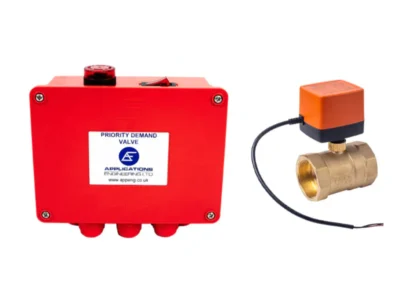In the world of pressure measurements, two terms often come up: pressure transducers and pressure transmitters.
While these products serve similar purposes, there are subtle differences between them that are important to understand. This blog post will delve into what separates pressure transducers from transmitters, their applications, and how to choose the right device for your needs.
What Are Pressure Transducers and Pressure Transmitters?
Pressure Transducers
A pressure transducer (such as the 985 differential pressure transducer) is a device that measures pressure and converts it into an analogue electrical signal, typically expressed in millivolts per volt (mV/V).
These devices use a pressure-sensitive element, such as a diaphragm, which deforms under pressure. This deformation is then converted into an electrical signal.
Pressure Transmitters
A pressure transmitter (like the 988 differential pressure transmitter), similar to a transducer, converts pressure readings into an electronic signal. However, a transmitter goes a step further by modifying, compensating, and amplifying the signal from a transducer to a remote receiver, such as a programmable logic controller (PLC).
This enables operators to monitor pressure levels and make adjustments as necessary.
Key Differences Between Pressure Transmitters and Transducers
While the terms are often used interchangeably, there are some key differences:
- Output signal: Pressure transducers typically provide a non-amplified voltage output, while pressure transmitters offer an amplified signal, usually in voltage or current (e.g., 4-20mA).
- Power consumption: Transducers generally require less energy and have lower power consumption, making them suitable for battery-powered applications.
- Signal processing: Transmitters include additional circuitry for temperature compensation and amplification.
- Noise immunity: Current output from transmitters is more resistant to electrical interference, especially over longer distances.
- Calibration: Many transmitters offer various calibration options, including turndown and zero/span adjustments.
Advantages and Applications
Advantages of Pressure Transducers
- Accurate and stable
- Easy to maintain
- Cost-effective
- Fast response time
Common Applications of Pressure Transducers
- Monitoring water pressure in pumps and pipework
- HVAC systems
- Refrigeration systems
- Brake and fuel pressure in vehicles
- Gas and liquid level measurement in medical devices
- Robotics and automation
- Environments where pressure fluctuations are common
Advantages of Pressure Transmitters
- Efficient and reliable
- Can withstand a wide range of environments
- Can be connected to other systems
- Capable of measuring pressure relative to atmospheric pressure
Common Applications of Pressure Transmitters
- Oil and gas production
- Hydraulic equipment control
- Chemical processing
- Water and wastewater treatment
- Pump control monitoring
- HVAC systems
Choosing Between a Pressure Transducer and a Pressure Transmitter
When selecting a pressure measurement device, consider the following factors:
- Assess the specific needs of your application.
- Determine whether you need a simple voltage output (transducer) or an amplified, processed signal (transmitter).
- Consider power constraints, especially for battery-operated or remote installations.
- Ensure the chosen device is compatible with your existing control systems or data acquisition equipment.
- Consider temperature range, vibration, and other environmental conditions that may affect the device’s performance.
Can pressure transducers and transmitters be used interchangeably?
While they serve similar purposes, they are not always interchangeable due to differences in output signal and power requirements. Always consult the specifications and system requirements before making a selection.
Are pressure transmitters more accurate than transducers?
Accuracy depends on the specific model and technology used. Both types can offer high accuracy, but transmitters may provide better stability over varying conditions due to their additional signal processing.
While pressure transducers and transmitters share many similarities, understanding their subtle differences can be crucial for selecting the right device for your application.
Expert Support for Your Pressure Measurement Needs
At Applications Engineering, we understand the complexities of selecting the right pressure control monitoring device for your application. Our extensive range of high-quality mechanical switches and differential pressure sensors includes both transducers and transmitters, suitable for a wide variety of industries and applications.
With our ISO 9001-certified management system, we ensure the highest standards of product quality and service. Our team of experienced professionals is ready to provide expert advice and support to help you choose the perfect solution for your pressure measurement requirements.
Don’t let the complexity of pressure measurement devices overwhelm you. Contact the friendly experts at Applications Engineering today, and let our industry knowledge and extensive product range work for you.
Share This Post




